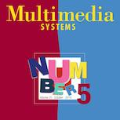Endoscopic content area refers to the informative area enclosed by the dark, non-informative, border regions present in most endoscopic footage. The estimation of the content area is a common task in endoscopic image processing and computer vision pipelines. Despite the apparent simplicity of the problem, several factors make reliable real-time estimation surprisingly challenging. The lack of rigorous investigation into the topic combined with the lack of a common benchmark dataset for this task has been a long-lasting issue in the field. In this paper, we propose two variants of a lean GPU-based computational pipeline combining edge detection and circle fitting. The two variants differ by relying on handcrafted features, and learned features respectively to extract content area edge point candidates. We also present a first-of-its-kind dataset of manually annotated and pseudo-labelled content areas across a range of surgical indications. To encourage further developments, the curated dataset, and an implementation of both algorithms, has been made public (https://doi.org/10.7303/syn32148000, https://github.com/charliebudd/torch-content-area). We compare our proposed algorithm with a state-of-the-art U-Net-based approach and demonstrate significant improvement in terms of both accuracy (Hausdorff distance: 6.3 px versus 118.1 px) and computational time (Average runtime per frame: 0.13 ms versus 11.2 ms).
翻译:内窥镜内容区是指大部分内窥镜片中包含的黑暗、非信息化边界区域所包含的信息区。对内容区的估计是内窥镜图像处理和计算机视觉管道的共同任务。尽管问题明显简单,但若干因素使得可靠的实时估计具有令人惊讶的挑战性。对这个专题缺乏严格的调查,加上缺乏这项任务的共同基准数据集,是该领域的一个长期问题。在本文件中,我们提出了两种基于精益GPU的计算管道的变体,其中结合边缘探测和圆圈的组合。两种变体因依赖手动功能而不同,而且分别学习了提取内容区域边缘候选人的特性。我们还提出了一组手动附加说明和假标签内容领域的原始数据集。为了鼓励进一步的发展,已经对数据集进行了整理,并实施了两种算法(https://doi.org/10.7303/syn32000, https://giuthub.com/charveal-dealal-dealal-developareal-deal-deal-astria-deal-deal-degraphal-deal-dealtraal-deal-deal-dealtractionasastrational-dealarearearea) 和(https-deal-destrual-deal-destrual-demental-deal-deal-deal-demental-dementaltramental-tamental-deal-martial-de)的拟议条件)。





